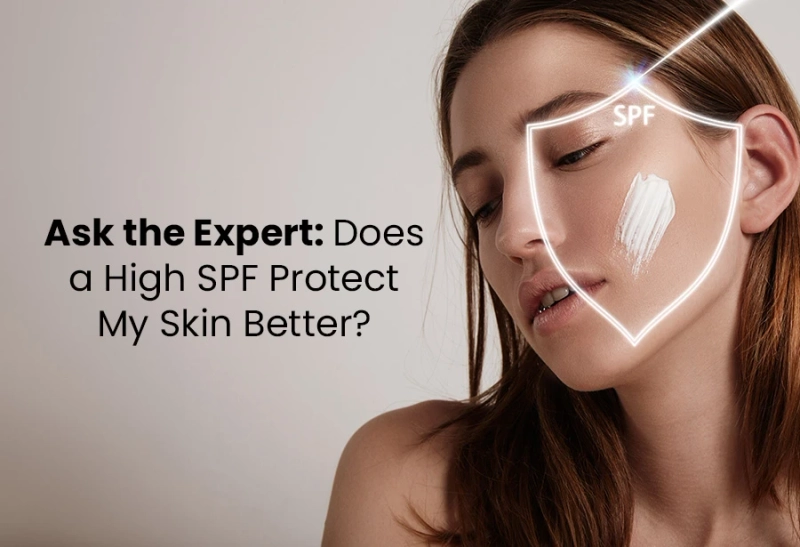We live in an era where every other beauty and fashion influencer boasts and preaches about the wonders of the magic product- sunscreen, and lures us into buying them. With so many people on the internet giving us different pieces of advice, it is natural that we ask ourselves the question: Does a high SPF protect my skin better? If you’re looking for the best sun protection cream for face, look no further! This article will take you on an enriching and informative journey to know what SPF exactly means and what quantity of it in your daily sunscreen is a must. Read till the end to know everything you need to know about sunscreens and the magic of SPF!
Does a Sunscreen with a Higher Quantity of SPF Protect my Skin Better than the one with a lower SPF?
Before landing on any product as your sun protection, let's first understand what UV or ultraviolet rays are and how they play a major role in deciding the best sunscreen available in the market:
Attributed with a much shorter wavelength than visible light, ultraviolet light cannot be seen by the human eye. Two types of UV rays can damage the DNA in your skin cells and cause skin cancer. It is critical to protect your skin from both types:
UVB rays are a major factor responsible for causing skin cancer as they initiate sunburn. The SPF number of a sunscreen mostly refers to the degree of UVB protection it gives.UVA rays harm the skin, causing tanning as well as skin aging and wrinkles. Sunburn is also caused by UVA radiation with the shortest wavelengths.Look for the term "broad spectrum" on a product's packaging, which suggests it contains chemicals that can protect you from both UVA and UVB rays. The Dry Touch Protective Emulsion SPF50 has a dry touch which is best for oil-prone skin. It is completely oil-free, gives you a matte finish, and works well for normal to oily skin.
What is the SPF Number Anyway?
The SPF value indicates how long it would take the sun's UV radiation to redden your skin when using the product exactly as prescribed versus the amount of time without sunscreen. So, ideally, using SPF 30 would take 30 times longer to burn than not wearing sunscreen.
An SPF of 30 permits around 3% of UVB rays to reach your skin. The Dry Touch Protective Emulsion SPF50 permits around 2% of those rays to pass through. That may appear to be a minor difference until you consider that the SPF 30 allows 50% more UV light onto your skin.
Under ideal conditions (such as in a laboratory), a sunscreen with a higher SPF and broad-spectrum coverage protects against sunburn, UVA damage, and DNA damage more effectively than comparable products with lower SPF values.
However, in real life, products with extremely high SPFs frequently give a false sense of protection. People who apply sunscreen with a higher SPF feel that they’re good to go and spend more time in the sun than what would be considered safe. They may decide not to reapply and end up with a lot more UV damage, which negates the objective.
SPF 50 may not be enough for persons who have a history of or are at high risk of skin cancer, genetic conditions such as albinism or xeroderma pigmentosum, or certain immunological problems. The same is true for specific scenarios, such as high-altitude climbing or skiing, or vacationing near the equator.
For any extended outdoor exercise, the Skin Cancer Foundation advises a water-resistant, broad-spectrum sunscreen with an SPF of 30 or higher. The general rule to follow when using sunscreens is to apply two ounces or two tablespoons of the Dry Touch Protective Emulsion SPF50 half an hour before going out in the sun and reapply every two hours irrespective of the SPF number of your sunscreen. While a dewy sunscreen may work well for dry skin, a matte finish sunscreen is the best sunscreen for oily skin.
Final Thoughts
While sunscreens with an SPF value of 30 or higher should be your first choice when looking for a sun protectant, it is also important not to rely solely on high-SPF sunscreens as your sole means of sun protection. There is no single method of sun protection that will completely protect you. You should make use of other protectants like hats, sunglasses, umbrellas, etc. to protect your skin from the harmful radiation of the sun at all times.


